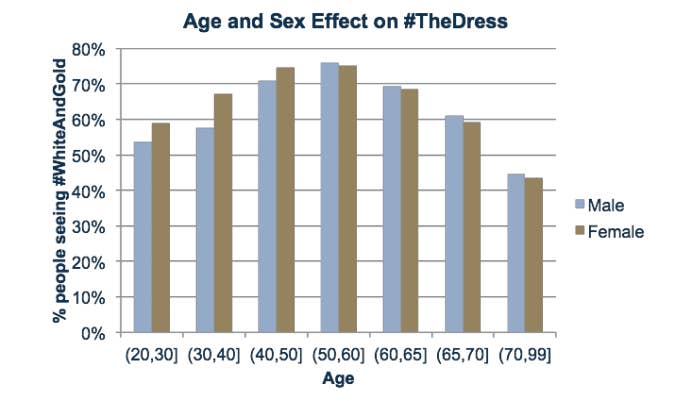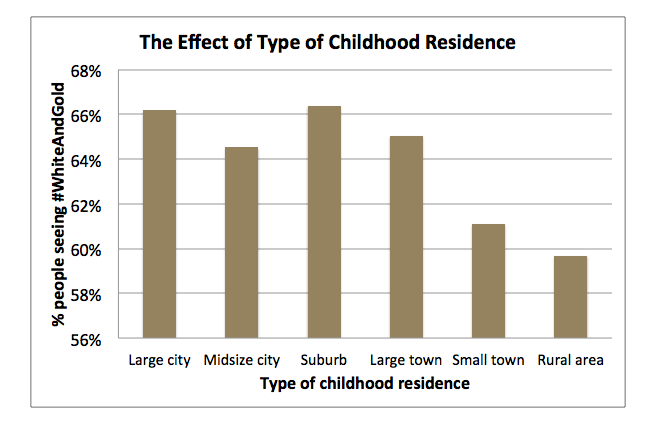
In the latest twist in #TheDress, a survey by DNA-testing company 23andMe suggests that genes don't play an obvious role in determining which colors you see, but it does seem to matter if you are old or young.
Those are among the findings of an online poll this week, in which 25,000 users said whether they saw the famous photo of the dress as blue and black (its true colors, haters) or white and gold, 23andMe told BuzzFeed News on Friday. "The huge amount of interest in this weird debate," the startup said, was an opportunity for "an instant genetics experiment."
When the dress first exploded on the internet, scientists hypothesized the differences may be rooted in how the brain filters out different parts of the color spectrum. Whatever the reason for that difference is, there is no clear sign it is genetic, Fah Sathirapongsasuti, a 23andMe computational biologist, told BuzzFeed News. (23andMe's explanation of the results are now available here.)
"Genetics definitely doesn't determine what you see," said Sathirapongsasuti (who, for the record, sees black and blue). "What genetics could do is sort of move you over to one side very gradually." A variant in gene ANO6 did show small signs of affecting how colors were perceived, although that link wasn't strong enough to be conclusive.
What seemed to play a much bigger role was users' ages. Customers around 20 were evenly split among white and gold and blue and black, researchers said. But the white-and-gold contingent grew as ages went up: At the peak, more than three quarters of those polled around age 60 range saw those colors. In particular, the proportion of white-and-gold-seeing men increased by almost 15% around age 40.
That combination started decreasing after 60, however. Only people over 70 saw more blue and black than white and gold, which Sathirapongsasuti attributed to aging.

"We know that the cone cells in the eyes degrade in sensitivity over time and are less sensitive to light," Sathirapongsasuti said. "The contrast is a little bit less pronounced in older populations. It's conceivable that older populations indeed see the world a bit more dark."
This finding squares with a BuzzFeed News poll of nearly 1,000 people, which also found that the older users were, the more likely they were to see blue and black.
Eye conditions also seemed to influence people's answers, according to 23andMe. Those with cataracts were about 50% likelier to see black and blue, whereas color-blind customers were likelier to see white and gold.
Researchers found completely unexpected associations too. Those who saw white and gold were more likely to have liposuction, use a tanning bed, work long hours, and grow up in cities. These are associations, keep in mind, not causations, although Sathirapongsasuti has some (totally untested) theories. Perhaps your vision is affected when you spend a lot of time basking in the ultraviolet light of tanning beds, staring at a glowing computer screen, or wandering around neon-lit cities at night.
So if you're a hardworking yuppie who likes to hit the tanning salon, and you saw a black-and-blue dress, congratulations — you're an anomaly.

